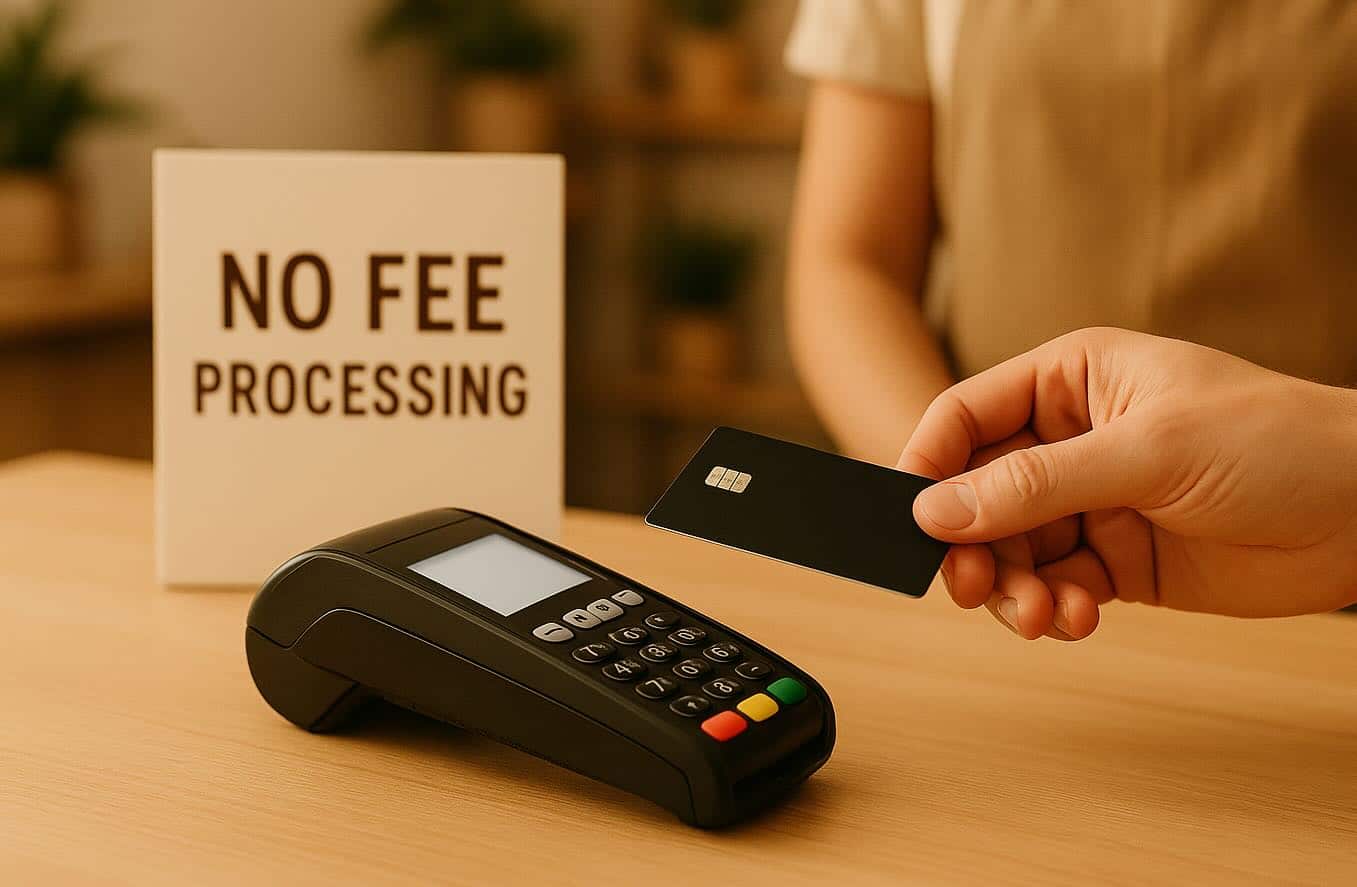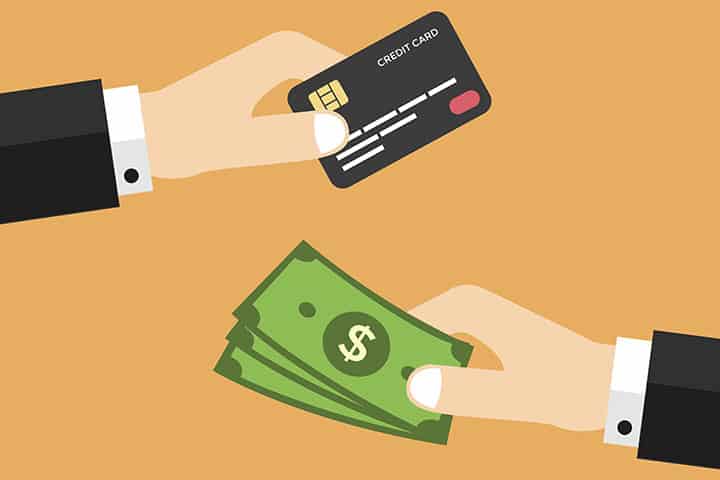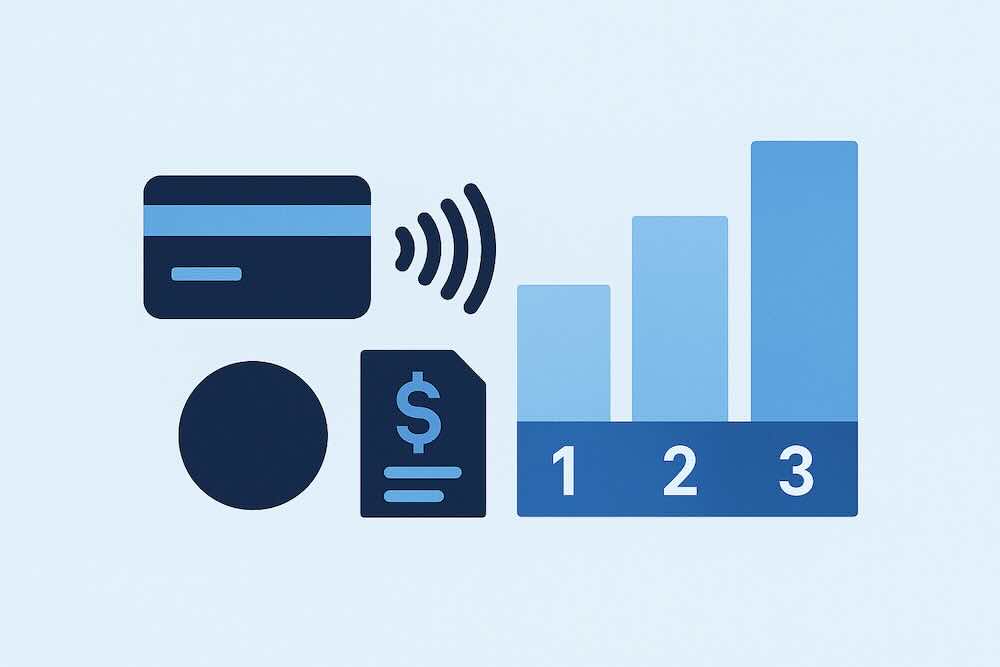High credit card processing fees continue to squeeze small business profit margins. For every $100 a customer spends, you could be losing $3 or more in transaction costs. What if you could shift those costs off your ledger without simply raising prices? That’s the promise of “no fee” credit card processing.
This model typically uses one of two options: surcharging or cash discounting, to transfer the cost of credit card fees to customers. Businesses keep more of what they earn, and customers choose how they pay. This approach is gaining traction in sectors where tight margins meet heavy payment volume.
In this article, we’ll explain how no fee processing works, what tools and compliance measures you’ll need, and how the model impacts payment technology, small business payments operations, compliance and profit margins. Whether you run a local café, a service-based business, or a professional services firm, this guide will help you assess whether this payment strategy fits your operations.
How No Fee Credit Card Processing Works
Understanding this model requires separating surcharging from cash discounting. Both aim to reduce credit card fees, but they do so in very different ways. Each has its implications for operations, customer experience and compliance.
Surcharging vs. Cash Discounting
Surcharging means you add a fee to the credit card payment amount. For example: a $50 bill becomes $51.45 because a 2.9 percent fee is added.
Cash discounting, by contrast, presents a higher “default” price and offers a discount when the customer chooses cash or another low-cost payment method. For example: a latte is listed at $5.50, but if paid by cash (or debit/ACH) the price drops to $5.00. Clients perceive a reward rather than a penalty.
Both strategies require payment technology support and regulatory compliance, but cash discounting often involves fewer legal hurdles. In many U.S. states, surcharge programs are restricted or regulated more heavily.
Required Tools & Setup
Adopting a no fee processing model means configuring your payment systems and customer experience accordingly:
- Payment terminals / POS: Your system must clearly distinguish payment types and automatically apply the correct surcharge or discount logic.
- Software integration: The payment software must connect with your existing platforms (eCommerce, POS, accounting) to reflect correct pricing and transaction flows.
- Compliance tools: You’ll need visible signage, customer disclosures at checkout, and printed receipts that reflect surcharge or discount amounts.
- Hardware costs: Some providers offer low-cost or free terminals; others charge hundreds. For many small businesses, equipment under $600 is common.
- Payment technology: A well-integrated gateway that supports dual pricing, surcharge rules, and reports on payment method shifts is key.
Staying Compliant with Regulations
Compliance is essential. Missteps can raise liability and reputational risk.
- Transparent disclosures: Any surcharge must be clearly disclosed in advance of transaction completion. For cash discounts, the posted price should reflect the real cost and the discounted amount must be clearly visible.
- State and card network rules: Some states prohibit surcharges altogether, while others allow them under specific limits.
- Card network rules: Networks like Visa require at least 30 days’ notice before implementing a surcharge and specific receipt labeling.
- Avoid misclassification: Surcharges apply only to credit card transactions, not to debit or prepaid cards in many cases.
Before implementing, it’s wise to consult legal counsel and your payment processor representative to ensure your state statute, card brand rules and your workflows align.
Benefits and Challenges for Small Businesses
Main Benefits
- Reduced credit card fees: By shifting the fee to customers or encouraging lower-cost payment methods, you improve profit margins and cash flow consistency.
- Automated workflows: Modern payment systems can handle surcharges or discounts with minimal staff overhead, freeing you to focus on operations and customer experience.
- Incentivizing alternative payments: Offering a cash discount encourages cash, ACH or debit payments. These methods carry lower processing costs.
Potential Challenges
- Customer reaction: Some customers may view added fees negatively when they appear unexpectedly. Clear upfront communication is critical.
- Competitive pressure: If rivals do not pass on fees or appear to offer “free” card payments, you may face price perception risks.
- Regulatory complexity: The compliance burden for surcharging is higher than for cash discounting. Mistakes can lead to chargebacks, fines or account termination.
Which Industries Benefit Most?
Businesses with narrow profit margins, frequent credit card transactions or high-ticket services often see the greatest gains from a no fee processing model. These include sectors like professional services, specialty retail, field service contractors and other operations where payment volume and fees combine to affect profitability.
Implementation: Tools & Methods
Here’s a practical roadmap to launch no fee processing:
- Assess fit: Review your transaction volume, average ticket size, customer payment habits and margin sensitivity.
- Select technology: Choose a payment platform that supports dual pricing logic, surcharge rules, integration with your POS/accounting system, and robust reporting.
- Draft communication plan: Prepare signage, online messaging and staff guidance so customers understand the payment method choice and fee or discount structure.
- Compliance review: Verify your state’s surcharge or cash discount laws, card brand notification requirements, and ensure your processor is configured correctly.
- Pilot and monitor: Launch in a controlled environment, track payment method shifts, monitor customer feedback and adjust pricing or messaging as needed.
- Scale: Expand once you’re confident in your technology, communication and compliance workflows. Then analyze impact on profit margins and cash flow.
Decision Checklist: Is Your Business Ready?
- Do you accept a high volume of credit card payments and feel that fees are eroding your margins?
- Are many customers or transactions larger in value, making fee recovery more meaningful?
- Will your customer base accept variable pricing depending on payment method?
- Can you clearly communicate the structure, such as “Card price” and “Cash or ACH price”?
- Are you operating in a state that allows surcharging, or are you prepared to implement cash discounting instead?
If you answered “yes” to most of these, a no fee processing model may make sense.
Choosing the Right Payment Technology Partner
Your choice of payment technology and partner matters. Look for:
- Integration with your existing POS, eCommerce or billing system.
- Built-in support for surcharges or cash discounts, automated calculation and reporting.
- Compliance features such as notice display, receipt formatting and card brand registration.
- Real-time analytics showing how the payment method mix is shifting and how fees are being managed.
- Transparent terms and full disclosure of how fees, discounts or alternative payments affect your finances.
Final Thoughts
Adopting a “no fee” credit card processing strategy is more than a pricing tweak. It is a structural change in how you manage payment technology, customer communications and profit margins. When executed well, it can shift processing costs away from your bottom line, reduce administrative overhead and give your business a stronger financial foundation. Success depends on transparent messaging, strong technology integration and strict compliance with payment industry rules and state law.
If you’re feeling the squeeze of credit card fees, this model deserves a serious look. Like any operational strategy, the details matter.
No Fee Credit Card Processing FAQs
Q: How do surcharging and cash discounting affect customer satisfaction?
A: Surcharging adds a line-item fee to credit card payments, which some customers view negatively. Cash discounting presents it as a reduction in price for choosing cash or another low-cost method. In many cases customers prefer it. The key to maintaining satisfaction lies in transparency and offering choice.
Q: What legal or compliance issues should small businesses consider?
A: Small businesses must understand both state-law restrictions and card-brand regulations. For example, some states ban surcharging entirely, while others restrict the surcharge to the business’s actual cost of card acceptance. Non-compliance can lead to fines, processing-account termination or regulatory scrutiny.
Q: How do I decide if no fee credit card processing is right for my business?
A: Evaluate your transaction patterns, customer payment behavior, competitive landscape and legal environment. Businesses with high ticket sizes, repeat customers who understand pricing structure and operations in states permitting surcharge or cash discount are stronger candidates. If you operate with low ticket sizes, high competition and less flexibility in pricing, the model may be less suitable.











